| Location | Thottam Type | Thottam Size |
|---|---|---|
| Chennai, Tamil Nadu, India | Terrace, Ground | 2,470 sqft |
Gayatri Ramachandran began gardening under her mother’s guidance when she was 11 years old. They planted many trees and shrubs together in their home but over the years, her mother took sole responsibility for the garden. Then, 2016 onwards, Gayatri started paying more serious attention to the garden when she began implementing a permaculture design approach for her garden.
Gayatri’s garden comprises approximately 1800 square feet of ground space and 670 square feet of terrace space in Mahalingapuram, Chennai. She and her mother grow a wide variety of predominantly native plants which are a mixture of annuals and perennials. The list includes, fruits – coconut, papaya, sapota, pomegranate and custard apple; vegetables – tomato, brinjal, okra, lablab beans, Lima beans, green chilly and several gourd species; greens – several perennial, traditional, drought-resistant varieties such as drumstick, agathi, thavasi, ponanganni and pasalai keerai; herbs – Tulsi, Sweet Basil, Tumbai, Tippili, Vetrilai, Thoothuvalai, Turmeric, Manga inji, Ginger, Cardamom Ginger, Nilavembu and Adathoda; flowering and ornamental shrubs and trees – several Jasmine species, Oleander, several Vrikshi (Ixora species), Hibiscus, Gardenia, Bauhinia, Sarakonnai (Cassia fistula), several species of the Temple tree (Plumeria) and relatively rare trees such as Punnai (Calophyllum inophyllum), Magizham (Mimusops elengi), Ashoka (Saraca asoca). Gayatri is also experimenting with growing perennial pigeon pea varieties.
For her garden, Gayatri relies on home-made compost, leaf litter and garden compost generated from her multifold cold compost piles in the ground garden, plenty of mulch from the many trees in her garden, including several green manure species, and locally-procured cow dung manure. In fact, when her 25 year old lime tree died from a Phytophthora root infestation last year, she made two culture beds from all of the dead wood and planted over it, so that her garden soil continues to be fed and thrives. To meet water requirements, Gayatri has installed an RWH system which recharges the open and bore well and uses EM (Effective micro- organisms), home-made bio-enzyme and agnihotra ash as bio-fertiliser and bio-pesticide, as and when needed.
Most of the produce from Gayatri’s garden is consumed at home with excess produce distributed to friends in the neighbourhood and elsewhere. For many years, she has also shared seeds and saplings of her native trees with other gardener friends and various groups involved in the greening of Chennai.
Gayatri refuses to consider any of the difficulties she faces as challenges, instead thinking of them as feedback from nature. However, she does concede that the persistent drought in Chennai from 2017 – 2019 and pest attacks posed serious challenges. In response, she changed the plants she grew, focusing on drought-resistant perennials that were mulched heavily with leaf litter from her own garden and from her neighbour’s garden, and she has reused and recycled laundry and dish-washing water in the garden, since only natural soaps and detergents were used at home. To deal with pests, she has increased the biodiversity of the garden space which in turn attracts natural predators such as birds, garden lizards, spiders, wasps, ladybird beetles, bees, bee flies etc., and has employed permaculture guild-building methods (companion plants, pest attractors, pest repellants etc.) to build resilience into the ecosystem.
According to Gayatri,
“A testimony to the richness and biodiversity of our urban garden is the variety of birds that it attracts, from the common tailorbird, black-rumped flameback woodpecker, white-throated kingfisher, black kite, shikra, rose-ringed parakeet and rufous treepie to more common birds such as crows, ravens, mynahs and the asian koel. Migratory birds that make yearly visits include the Indian pitta and the orange-headed thrush. We have also had the red dwarf honey bee (Apis florea) build its seasonal hives in our home garden trees for a long time. They stopped coming post Cyclone Vardah (Dec 2016), but arrived again this year after a hiatus of 3 years.”
Gayatri has plans to begin urban permaculture gardening workshops for interested folks.
REFERENCES
Phone conversation with Gayatri

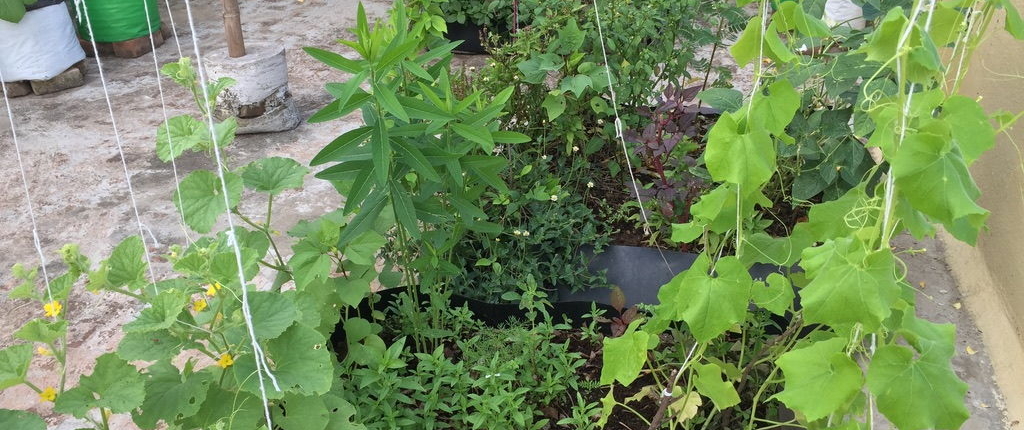
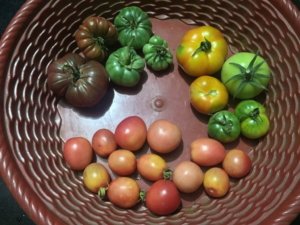
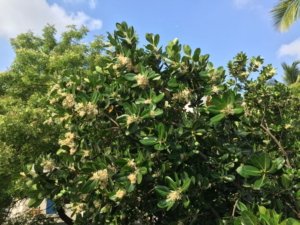
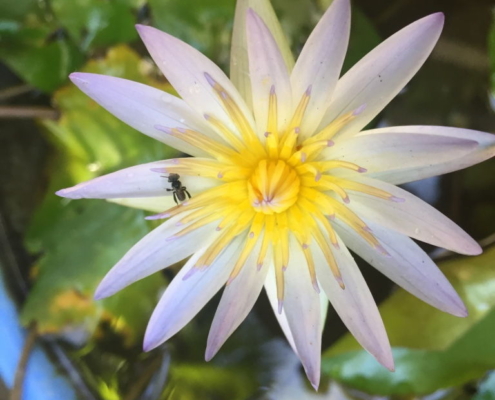
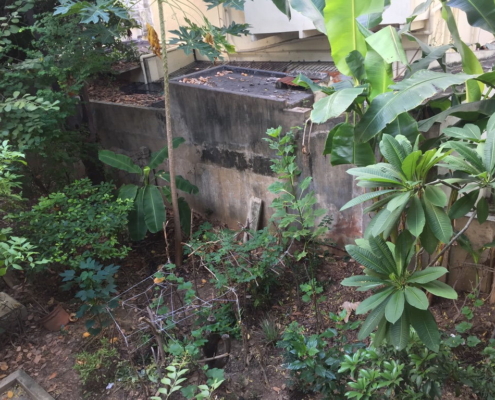
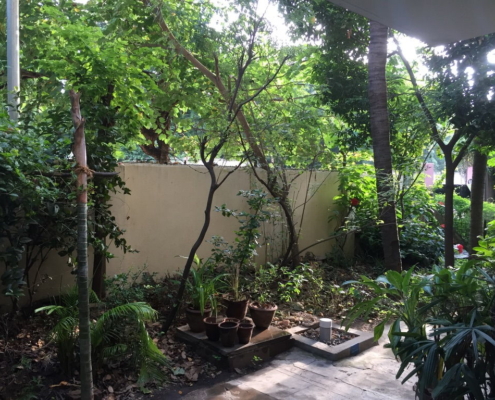
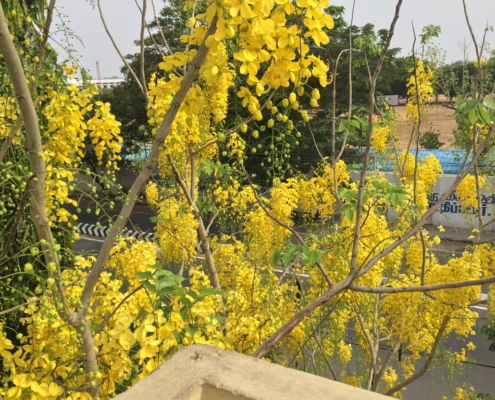
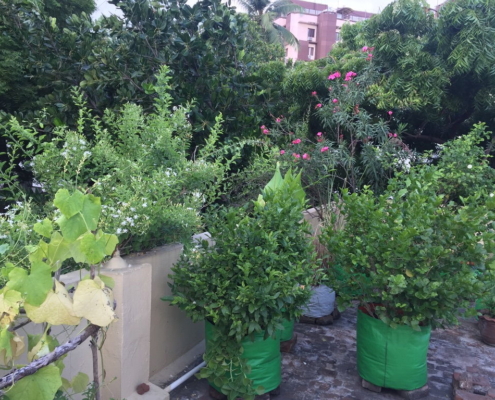
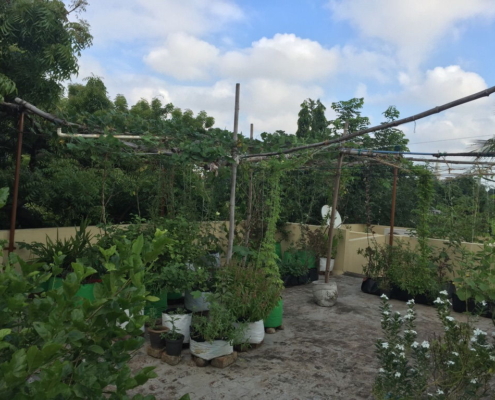
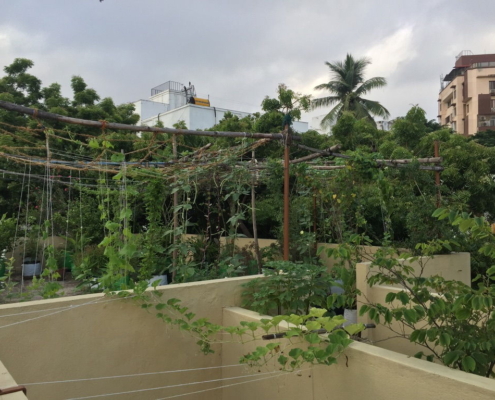
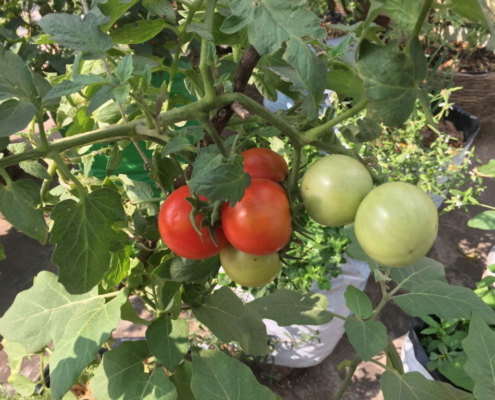
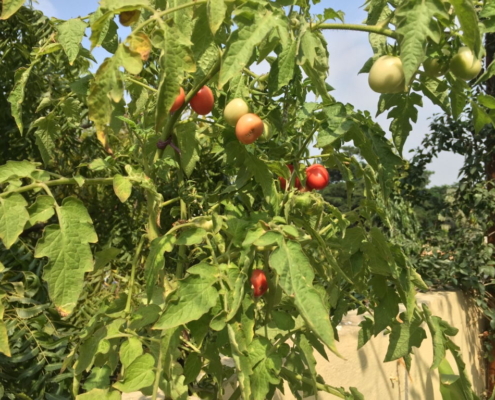
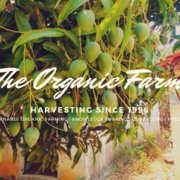 © The Organic Farm
© The Organic Farm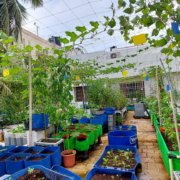 © S Raghu
© S Raghu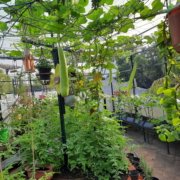 © Sumithra Srikanth
© Sumithra Srikanth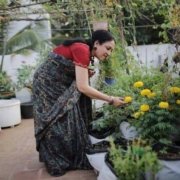 The Hindu
The Hindu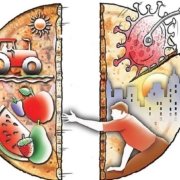 © The Hindu
© The Hindu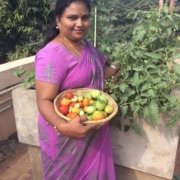 Special Arrangement
Special Arrangement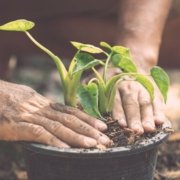 © The Better India
© The Better India Special Arrangement
Special Arrangement © Sumithra Srikanth
© Sumithra Srikanth © Indra Gardens
© Indra Gardens